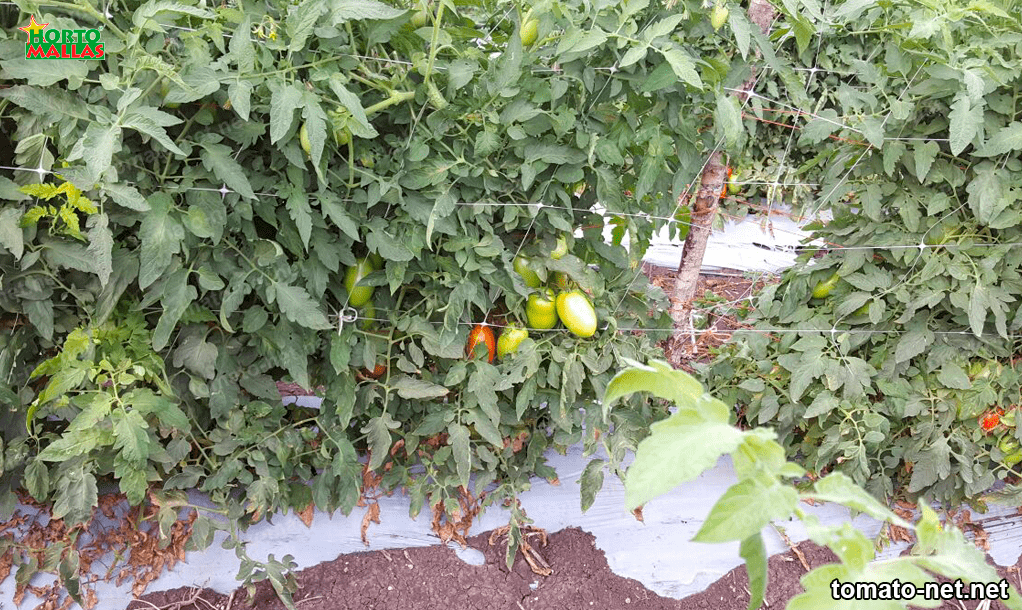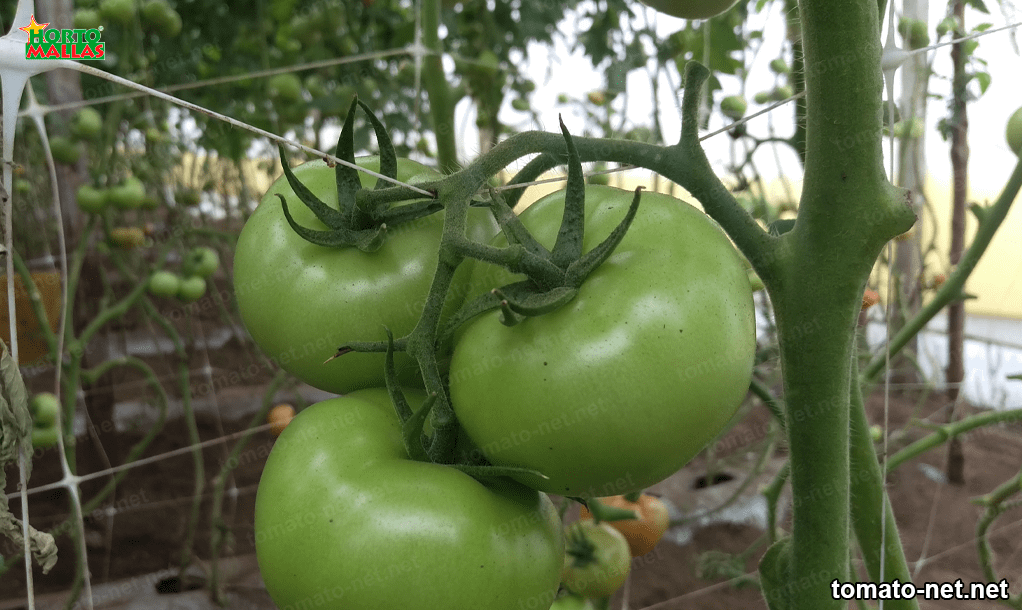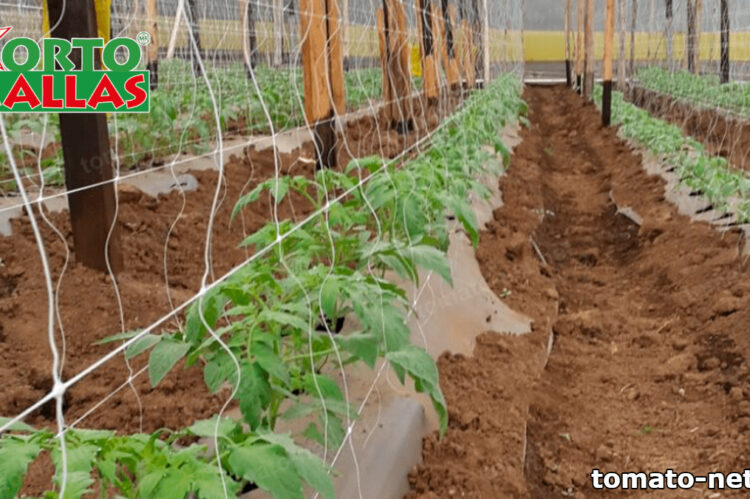Tomato netting is a mesh used for the healthy growth of tomatoes
it is a type of mesh used to support and guide tomato plants as they grow. This mesh is made of strong plastic and has small holes that allow branches to pass through. Using a tomato net can have several benefits for gardeners. First, it allows tomato plants to grow upright, which maximizes exposure to sun and air. This can improve fruit set and prevent fungal diseases that can arise when the leaves of the plant are in contact with the soil.Also, the use of a tomato net can make it easier to access the tomatoes for harvesting, since the fruits grow in the holes in the netting and are easy to reach. The mesh can also protect the tomatoes from birds or other creatures that might want to eat them before they are ripe.
Using a tomato net can also make the gardeners job easier by keeping tomato plants neat and in one direction. This makes watering, fertilizing, and pruning easier and more efficient. Overall, the tomato net is a useful tool for gardeners who want to maximize fruit production from their tomato plants. By keeping plants upright, improving sun and air exposure, and making tomatoes easier to access for harvesting, tomato netting can help improve the health and productivity of tomato plants.

Preserves and improves crop quality with tomato netting
This mesh was the beginning of modern fruit growing, since it was essential to preserve the optimal qualities of the fruit and to optimize production. In the late 19th century, farmers began making tomato nets from weather-resistant polypropylene. This net was specially designed to protect tomatoes from bad weather. The netting kept the sun off the tomato for longer fruit life, as well as a wider distribution of sunlight for optimal growth. In addition, it also helped protect the tomato from insects, moths, and other pests. The tomato net was perfected over the years. Different types of synthetic fibers and polypropylene were developed to improve ventilation, better heat distribution and weather resistance. In recent years, synthetic woven mesh panels have been created to improve the sunlight absorption capacity of tomatoes. These panels also provide additional protection against wind and ultraviolet rays.
The evolution of these new fabrics has improved the permissiveness of the mesh, reducing the space between the threads to increase resistance to the elements. Recent technological advances have contributed to increasing the productivity of tomato cultivation. There are polypropylene mesh fabrics resistant to the sun’s rays. In addition, there are also synthetic fabrics that are wind resistant and have anti-UV properties. These meshes allow better absorption of sunlight and resistance to insects, as well as superior durability to other fabrics. It has also become an important aspect of organic production. These tissues allow for the production of organic tomatoes and allow fruiting to occur without the use of chemical pesticides. This also allows the soil to remain fertile and healthy so the tomatoes continue to grow strong and healthy.
How has tomato growing changed in recent years?
With the advent of increasingly advanced growing technology, the way tomatoes are grown has undergone a major change in recent years. From the way tomatoes are planted to the way they are harvested and stored on the market, tomato farming has changed a lot in the last few years. The most common method of growing tomatoes has changed to accommodate new environmental and health requirements. In the past, tomatoes were grown in open fields, and as they spread across the field, growers controlled their development and harvest. Now, however, tomato cultivation is mainly through protected cultivation, where tomatoes are planted in greenhouses and their growth is controlled through the use of automatic irrigation systems, pesticides, and other environmental factors. There has also been an increase in the adoption of precision agriculture for tomato cultivation.

Advances in harvesting methods have contributed to the increase in tomato production worldwide thanks to the use of trellis mesh. Traditionally, the tomato harvest relied on numerous manual workers to harvest tomatoes with their hands. However, now the tomatoes are harvested with machines that allow for greater harvesting capacity. These machines can pick more tomatoes at a much faster rate than humans, resulting in more tomato production. There has been an improvement in the way tomatoes are stored in the markets. Previously, tomatoes were stored cold, which often led to a loss of ripeness and nutritional qualities. Tomatoes are now stored in warmer conditions, which better preserve their nutritional qualities and maintain moderate ripeness.
